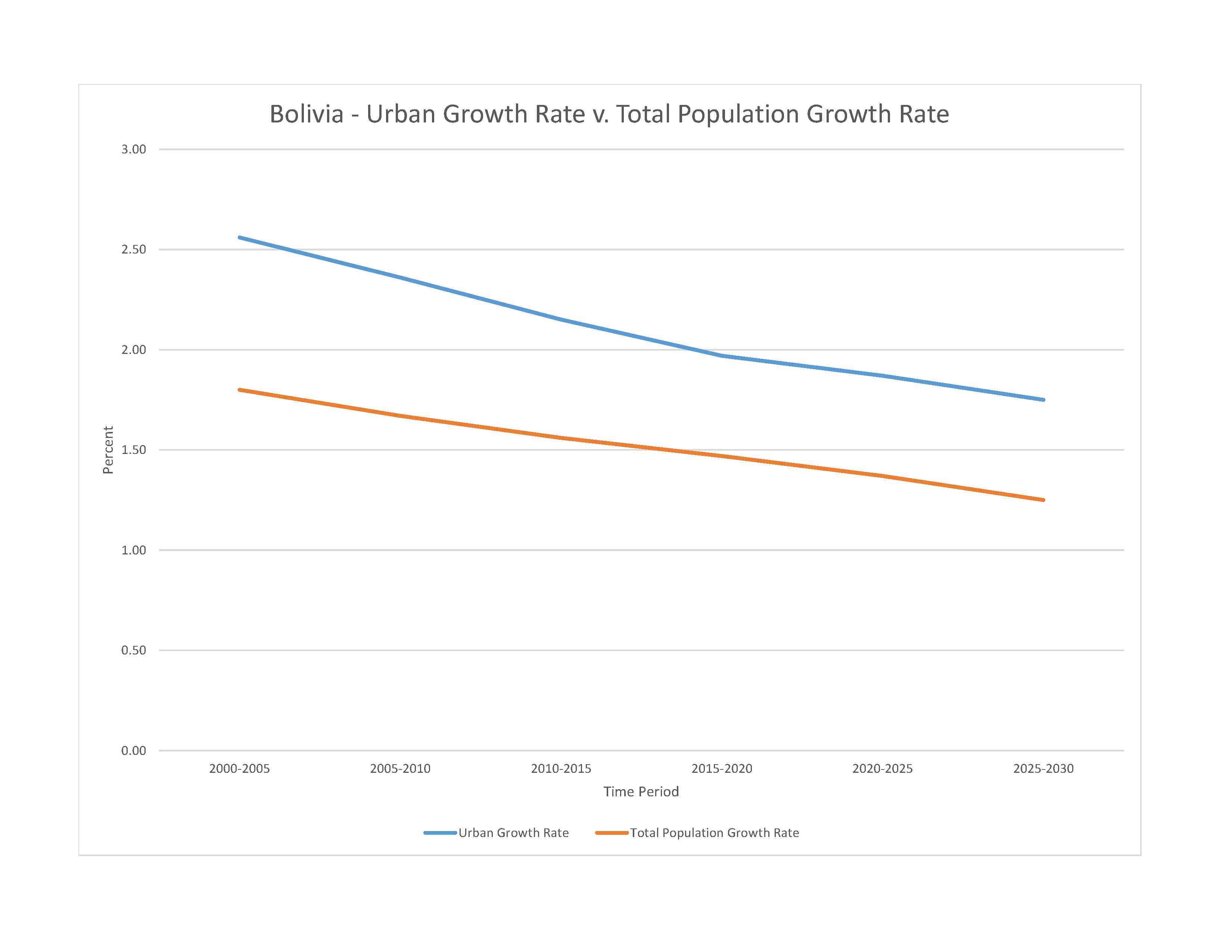
12,186,079 (2023 est.)
noun: Bolivian(s)
adjective: Bolivian
Mestizo (mixed White and Amerindian ancestry) 68%, Indigenous 20%, White 5%, Cholo/Chola 2%, African descent 1%, other 1%, unspecified 3%; 44% of respondents indicated feeling part of some Indigenous group, predominantly Quechua or Aymara (2009 est.)
note: results among surveys vary based on the wording of the ethnicity question and the available response choices; the 2001 national census did not provide "Mestizo" as a response choice, resulting in a much higher proportion of respondents identifying themselves as belonging to one of the available indigenous ethnicity choices; the use of "Mestizo" and "Cholo" varies among response choices in surveys, with surveys using the terms interchangeably, providing one or the other as a response choice, or providing the two as separate response choices
Spanish (official) 68.1%, Quechua (official) 17.2%, Aymara (official) 10.5%, Guarani (official) 0.6%, other 1.5%, unspecified 2.1%; note - Bolivia's 2009 constitution designates Spanish and all Indigenous languages as official; 36 Indigenous languages are specified, including a few that are extinct (2012 est.)
major-language sample(s):
La Libreta Informativa del Mundo, la fuente indispensable de información básica. (Spanish)
The World Factbook, the indispensable source for basic information.
Spanish audio sample:
Roman Catholic 65%, Protestant 19.6% (Evangelical (non-specific) 11.9%, Evangelical Baptist 2.1%, Evangelical Pentecostal 1.8%, Evangelical Methodist 0.7%, Adventist 2.8%, Protestant (non-specific) 0.3%), Believer (not belonging to the church) 0.9%, other 4.8%, atheist 1.7%, agnostic 0.6%, none 6.1%, unspecified 1.3% (2023 est.)
Bolivia ranks at or near the bottom among Latin American countries in several areas of health and development, including poverty, education, fertility, malnutrition, mortality, and life expectancy. On the positive side, more children are being vaccinated and more pregnant women are getting prenatal care and having skilled health practitioners attend their births.
Bolivia’s income inequality is the highest in Latin America and one of the highest in the world. Public education is of poor quality, and educational opportunities are among the most unevenly distributed in Latin America, with girls and indigenous and rural children less likely to be literate or to complete primary school. The lack of access to education and family planning services helps to sustain Bolivia’s high fertility rate—approximately three children per woman. Bolivia’s lack of clean water and basic sanitation, especially in rural areas, contributes to health problems.
Between 7% and 16% of Bolivia’s population lives abroad (estimates vary in part because of illegal migration). Emigrants primarily seek jobs and better wages in Argentina (the principal destination), the US, and Spain. In recent years, more restrictive immigration policies in Europe and the US have increased the flow of Bolivian emigrants to neighboring countries. Fewer Bolivians migrated to Brazil in 2015 and 2016 because of its recession; increasing numbers have been going to Chile, mainly to work as miners.
0-14 years: 29.14% (male 1,813,044/female 1,737,699)
15-64 years: 64.03% (male 3,929,462/female 3,872,943)
65 years and over: 6.84% (2023 est.) (male 384,356/female 448,575)
total dependency ratio: 56.3
youth dependency ratio: 48.7
elderly dependency ratio: 12
potential support ratio: 8.3 (2021 est.)
total: 26.2 years (2023 est.)
male: 25.9 years
female: 26.6 years
1.06% (2023 est.)
18.1 births/1,000 population (2023 est.)
6.5 deaths/1,000 population (2023 est.)
-1 migrant(s)/1,000 population (2023 est.)
a high altitude plain in the west between two cordillera of the Andes, known as the Altiplano, is the focal area for most of the population; a dense settlement pattern is also found in and around the city of Santa Cruz, located on the eastern side of the Andes
urban population: 71.2% of total population (2023)
rate of urbanization: 1.87% annual rate of change (2020-25 est.)

1.936 million LA PAZ (capital), 1.820 million Santa Cruz, 1.400 million Cochabamba (2022); 278,000 Sucre (constitutional capital) (2018)
at birth: 1.05 male(s)/female
0-14 years: 1.04 male(s)/female
15-64 years: 1.01 male(s)/female
65 years and over: 0.86 male(s)/female
total population: 1.01 male(s)/female (2023 est.)
21.1 years (2008 est.)
note: data represents median age at first birth among women 25-49
161 deaths/100,000 live births (2020 est.)
total: 22.3 deaths/1,000 live births (2023 est.)
male: 24.5 deaths/1,000 live births
female: 20 deaths/1,000 live births
total population: 72.5 years (2023 est.)
male: 71 years
female: 74 years
2.26 children born/woman (2023 est.)
1.1 (2023 est.)
66.5% (2016)
improved: urban: 99.2% of population
rural: 80.2% of population
total: 93.5% of population
unimproved: urban: 0.8% of population
rural: 19.8% of population
total: 6.5% of population (2020 est.)
7.9% of GDP (2020)
1.03 physicians/1,000 population (2017)
1.3 beds/1,000 population (2017)
improved: urban: 97.8% of population
rural: 48.4% of population
total: 83.1% of population
unimproved: urban: 2.2% of population
rural: 51.6% of population
total: 16.9% of population (2020 est.)
degree of risk: very high (2023)
food or waterborne diseases: bacterial diarrhea and hepatitis A
vectorborne diseases: dengue fever, malaria, sexually transmitted diseases: hepatitis B (2024)
20.2% (2016)
total: 2.98 liters of pure alcohol (2019 est.)
beer: 2.22 liters of pure alcohol (2019 est.)
wine: 0.14 liters of pure alcohol (2019 est.)
spirits: 0.54 liters of pure alcohol (2019 est.)
other alcohols: 0.08 liters of pure alcohol (2019 est.)
total: 12.7% (2020 est.)
male: 20.5% (2020 est.)
female: 4.8% (2020 est.)
3.4% (2016)
57.1% (2023 est.)
women married by age 15: 3.4%
women married by age 18: 19.7%
men married by age 18: 5.2% (2016 est.)
9.8% of GDP (2020 est.)
definition: age 15 and over can read and write
total population: 92.5%
male: 96.5%
female: 88.6% (2015)
NOTE: The information regarding Bolivia on this page is re-published from the 2024 World Fact Book of the United States Central Intelligence Agency and other sources. No claims are made regarding the accuracy of Bolivia 2024 information contained here. All suggestions for corrections of any errors about Bolivia 2024 should be addressed to the CIA or the source cited on each page.
This page was last modified 04 May 24, Copyright © 2024 ITA all rights reserved.